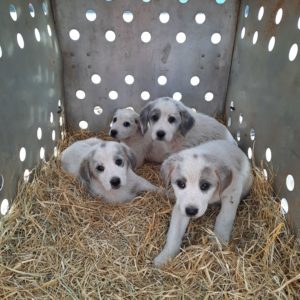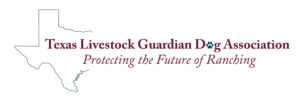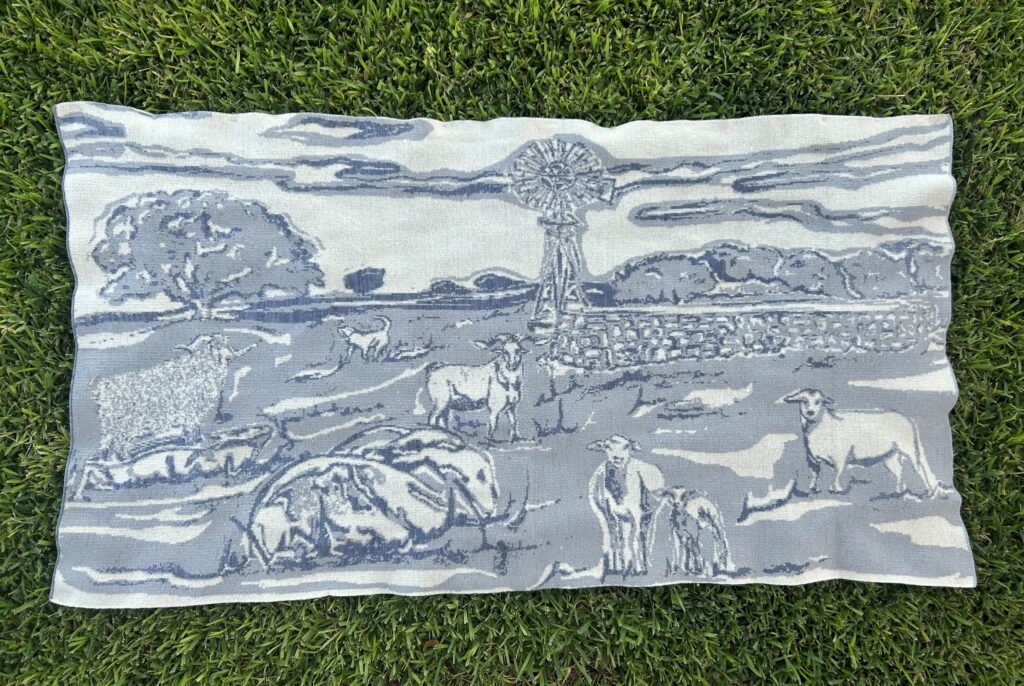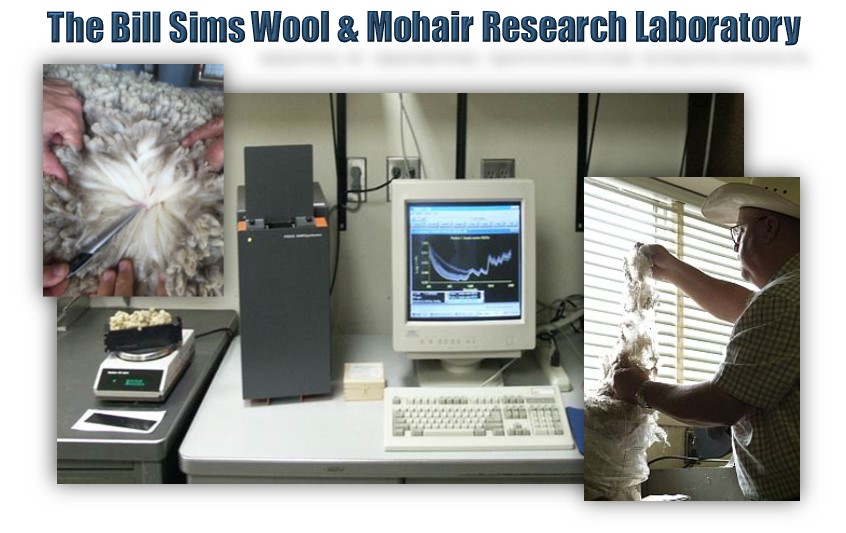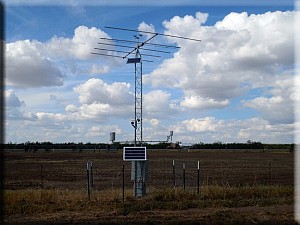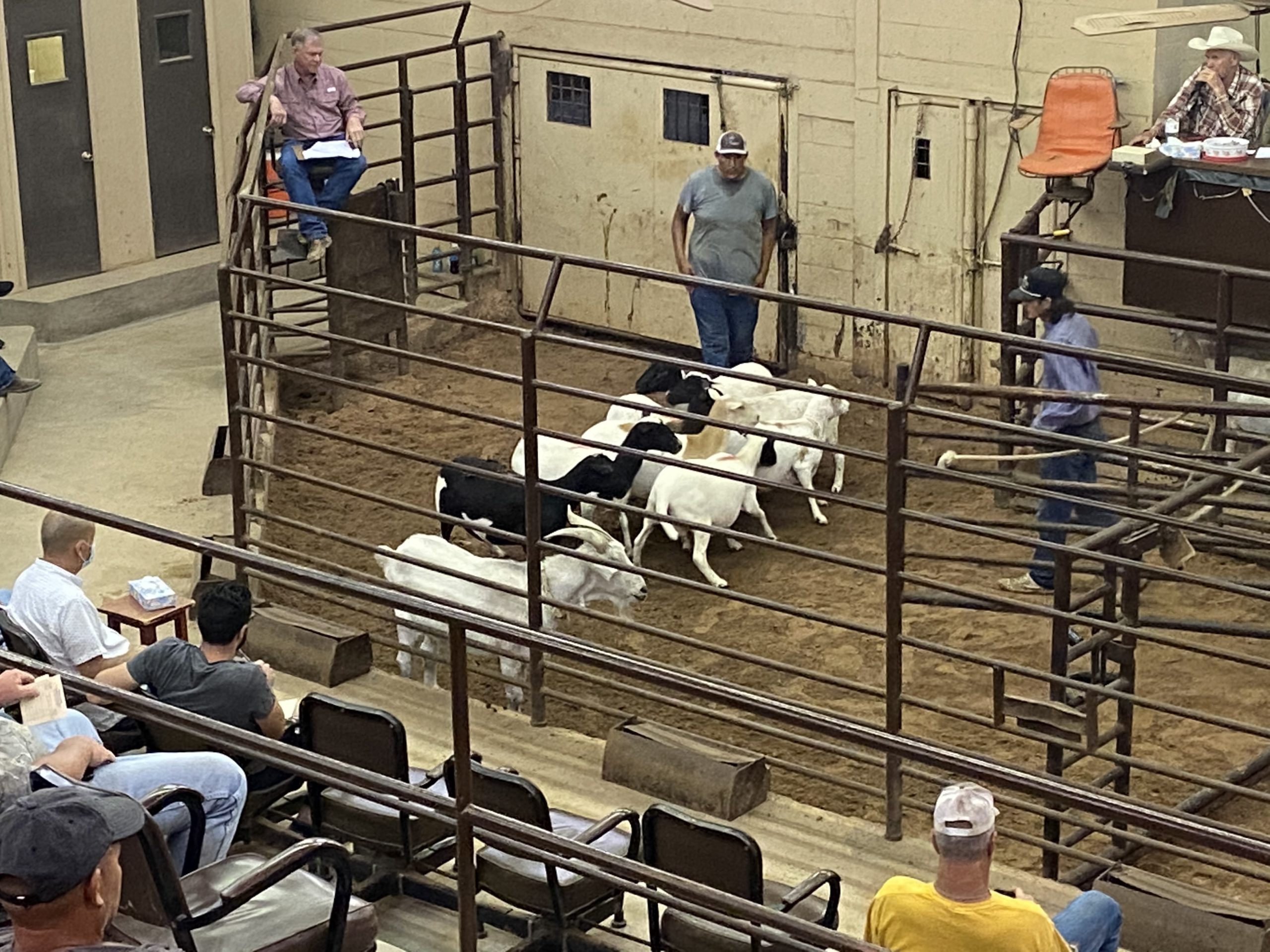AgriLife LGD Program Update
On Thursday, Feb. 17, 2022, at 3 p.m. Lauren Stump, DVM, from Nestle Purina will be the featured guest speaker for the LGD webinar series, titled “Canine Nutrition for Working LGDs.” Here is the link to register for the webinar. In addition, the webinar will be broadcast live on our k page. The video will be recorded and posted to our YouTube Channel as well.
We have scheduled our Spring 2022 LGD Field Day for May 13 from 8 a.m.-4 p.m. in Crockett County. The event will be held at the Crockett County 4-H Barn at 1301 Avenue AA in Ozona. Contact the Crockett County AgriLife Extension Office at 325-392-2721 to register for the event. Presentation topics will include health care, nutrition, and GPS trackers. There will be a producer panel and tours of ranching operations utilizing LGDs to protect small ruminants.
What are the top LGD qualities?
Producers frequently ask what the best qualities are in a livestock guardian dog. In this months “The Guardian Way” we will discuss what we feel those top qualities could be:
- Strongly bonded to their livestock. A LGD that is strongly bonded to their livestock rarely roams leaving their charges unprotected. This is probably the most important quality a LGD should have. LGDs that roam are more likely to be hit by cars, shot, poisoned, or caught in a snare.
- Parents are working dogs of LGD breeds. It’s important to use LGDs from working parents and LGD breeds because you greatly increase the chances that the dogs will be successful guardians of your livestock. LGDs have been bred for thousands of years by herders in Europe to have decreased prey drive instincts. By using non-LGD breeds your chances of the dogs chasing, stalking, biting, and killing your livestock greatly increase.
- Defends territory from all threats. A top quality LGD should protect your livestock from both ground and aerial predators. While not all LGDs guard livestock against aerial predators, some dogs will. Some producers/breeders feel that this behavior is instinct while others believe that this is a learned trait in the dogs. Regardless of how or why the dogs defend against these threats, a top quality LGD should guard against them.
- Match human/LGD socialization to management. Interactions between people and LGDs, particularly in the first few months of life, will affect how LGDs bond to humans and livestock. Although each LGD is unique, they have inherently different aptitudes. The best LGDs are those that receive the right amount of human interaction early in life so that they will remain committed to their charges and will also approach people in a friendly manner when they encounter them. It is unclear how much socialization is needed. It will likely vary depending on the dog and the style of livestock management. The research efforts we have ongoing limit human socialization during the bonding phase to around 5 minutes per dog, two to three times per week. Research conducted in the LGD Bonding Project has not shown a correlation with highly socialized dogs roaming more to find human contact than moderately socialized dogs. It’s important for producers to remember not to reward dogs for leaving livestock. It is often perceived that a dog may be over socialized because it returns to locations with humans. Producers regularly feed the dogs assuming they are hungry, or they place them into a pen with feed until they have time to return the dog to the pasture. This practice is reinforcing the bad behavior of leaving livestock and roaming to find humans. Do not feed or praise your LGD anytime they have left livestock! When the dogs are found at your home or headquarters, they need to be scolded and immediately returned to their charges.
- Understands basic canine commands and training. LGDs should understand at least three basic commands along with knowing their name. The commands of “no,” “come,” and “stay” should all be taught to your LGD during the bonding phase. These three basic commands should cover the common commands needed for a working LGD on most ranches. Commands such as sit and down may be taught to your LGD, but they are generally not needed in large livestock operations. Smaller producers may want to teach their LGD these additional commands.
LGDs & The Bonding Project
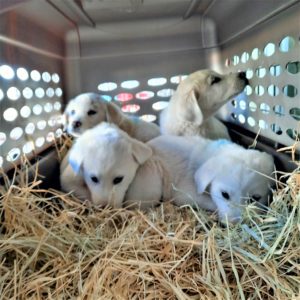
Female Legends of Country Music: Dolly, Reba, Patsy and Trisha. Eight-week-old Great Pyrenees x Akbash pups. (Texas A&M AgriLife photo courtesy Costanzo 2022)
The National Sheep Industry Improvement Center (NSIIC) Bonding Project got underway with the purchase of 16, eight-week-old puppies from three different LGD breeders in Texas. Eight of the pups went directly to producers for bonding while the other eight pups stayed at the AgriLife Center and will be trained and bonded by AgriLife personnel. Please welcome our newest puppies at the center, the Female Legends of Country Music, the Flintstones, and the Brady Bunch.
The eight pups kept at the AgriLife Center were placed into our bonding pens with four to six head of Dorper ewes. Since the National Sheep Industry Improvement Center is funding this phase of the bonding project, we will not be bonding any of these pups with goats as in the past. The pups will stay in the 60×60 enclosure for one month and then they will be released into a
one-acre bonding pen until they are 6 months old. After that, the pups will spend two months in a 100-acre pasture with more livestock and dogs before heading off to the five cooperating producers to be with the other eight dogs that the producers bonded themselves.
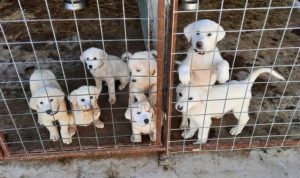
The Brady Bunch: Mike, Greg, Peter, Bobby (hiding from camera), Carol, Marsha, Jan and Cindy (Texas A&M AgriLife photo courtesy Costanzo 2022)
In closing
If you enjoyed this monthly LGD blog, please don’t forget to subscribe to it with this link The Guardian Way – Texas A&M AgriLife Research and Extension Center at San Angelo (tamu.edu).
To provide feedback on this article or request topics for future articles, please contact me at bill.costanzo@ag.tamu.edu or 325-657-7311. The Texas A&M AgriLife Livestock Guardian Dog Program is a cooperative effort by Texas A&M AgriLife Research and the Texas Sheep and Goat Predator Management Board. Make sure to follow us on our social media sites and share them with your friends and family!
Facebook: https://www.facebook.com/TAMUlivestockguarddog/
Instagram: @tamulivestockguarddog
YouTube: https://www.youtube.com/channel/UCF7YbP6bNDV7___6H8mifBA
Don’t forget to check out the Texas LGD Association on online! Follow the organization at https://www.facebook.com/TexasLGDAssociation or check out their website!

